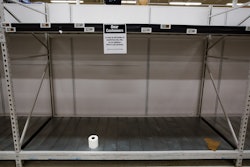
In the business world, the term “distribution” refers to the channels, logistics and processes to move products and services from the point of manufacture, production or creation to the ultimate end-users. When “distribution” is linked to “strategy,” the question is -- How can distribution serve as a component or variable to support a company’s overall business and marketing strategy?
Distribution is often an unrecognized and under-appreciated element of strategy, yet it is almost always an important factor in a winning strategy.
There are an unlimited number of companies and examples of distribution strategies that helped propel companies to success, but it might be more enlightening to summarize some of the ways that distribution can play a key role in strategy.
· Open new markets. Opening up a new channel of distribution, or expanding distribution into new geographic areas, can give new groups or new types of consumers access to a company’s products or services.
· Speed up delivery. Distributing a product or service more quickly is sometimes enough of an advantage to justify a new distribution strategy. Some online marketplaces combined speed-of-delivery with a direct-to-consumer business model to forge its distribution strategy, while some rideshare companies combined speed of delivery with smartphone app convenience.
· Reduce costs. If a new system of distribution or improved logistics can significantly reduce costs and improve profit margins, then that distribution strategy might be worthy of pursuit. For example, if a retailer is operating a very expensive retail-store distribution system, the chain might benefit from shifting some of its sales to an online distribution system to save money.
· Reduce out-of-stocks. If retail out-of-stocks is a major problem in an industry or product category, then a new distribution strategy might be called for. Often, an out-of-stocks problem must be attacked with one eye on marketing and promotional activities and the other eye on supply chain and logistics. What looks like a logistics problem might actually be a promotional problem (i.e., consumer promotions might be causing the out-of-stock problem).
· Achieve distribution. If a small company with limited resources has developed an appealing new product but can’t get its new product on the shelf in retail stores, then it could approach a major retailer and offer to distribute its new product exclusively in that retailer’s stores. While this strategy limits the upside potential of a new product because it limits distribution possibilities, it might still be a wise strategy for a small company (limited distribution is better than no distribution). A variation of this strategy is to offer the new product to each retail chain under an exclusive brand name (i.e., each retailer has its own unique brand identity).
· Burnish a brand image. The types of stores a product is placed in can shape and reinforce the consumer’s image of that brand. So, a luxury brand might choose to be distributed exclusively in upscale, high-end retail stores. In contrast, a brand targeting a mass market might seek distribution in every channel and every nook and cranny of the economy.
· Block a competitor. If a manufacturer should become aware that a major competitor is planning to massively expand its online presence and direct-to-consumer business activity, then that manufacturer might aggressively expand its own direct-to-consumer channel of distribution as a blocking action or delaying tactic to blunt the competitor’s actions.
But, how does a company get to an optimal distribution strategy?
The types of research of greatest value in developing an optimal distribution strategy for a given brand or business are listed below:
· Qualitative research among consumers, customers, dealers, salespeople and workers in the distribution system provides observations, understanding and knowledge that can suggest viable distribution strategies, identify logistic alternatives and develop hypotheses about how to improve or optimize a distribution network.
· Survey-based research yields statistically projectable knowledge about the attitudes, observations and behaviors of consumers, retailers, dealers and distribution workers. The goal is to not only prove or disprove some of the major hypotheses developed during the qualitative research, but also to determine the relative appeal of various distribution models to end-customers, retailers, dealers, distributors, etc.
· Secondary data is often used to help optimize a distribution system. Such data might include population and demographic data; economic data and trends; consumer spending data by product category and type of household; transportation alternatives, delivery times, and relative costs; traffic patterns and congestion data; competitive data, etc. The exact types of secondary data required vary by type of product or service and the geographic area.
· Modeling and optimization might be a final step to combine all of this knowledge with the hypotheses, preferences, and the many types of data into one or more simulation models, so that optimal solutions can be sought. The modeling process involves maximizing or minimizing a desired outcome, given various inputs and constraints.
The exact types of research, data and modeling needed to craft an optimal distribution strategy would vary by business, category and brand, but you can at least shape an optimal distribution strategy and magnify your brand’s overall strategy and long-term success.




![Pros To Know 2026 [color]](https://img.sdcexec.com/mindful/acbm/workspaces/default/uploads/2025/08/prostoknow-2026-color.mduFvhpgMk.png?auto=format%2Ccompress&bg=fff&fill-color=fff&fit=fill&h=100&q=70&w=100)







![Pros To Know 2026 [color]](https://img.sdcexec.com/mindful/acbm/workspaces/default/uploads/2025/08/prostoknow-2026-color.mduFvhpgMk.png?ar=16%3A9&auto=format%2Ccompress&bg=fff&fill-color=fff&fit=fill&h=135&q=70&w=240)





